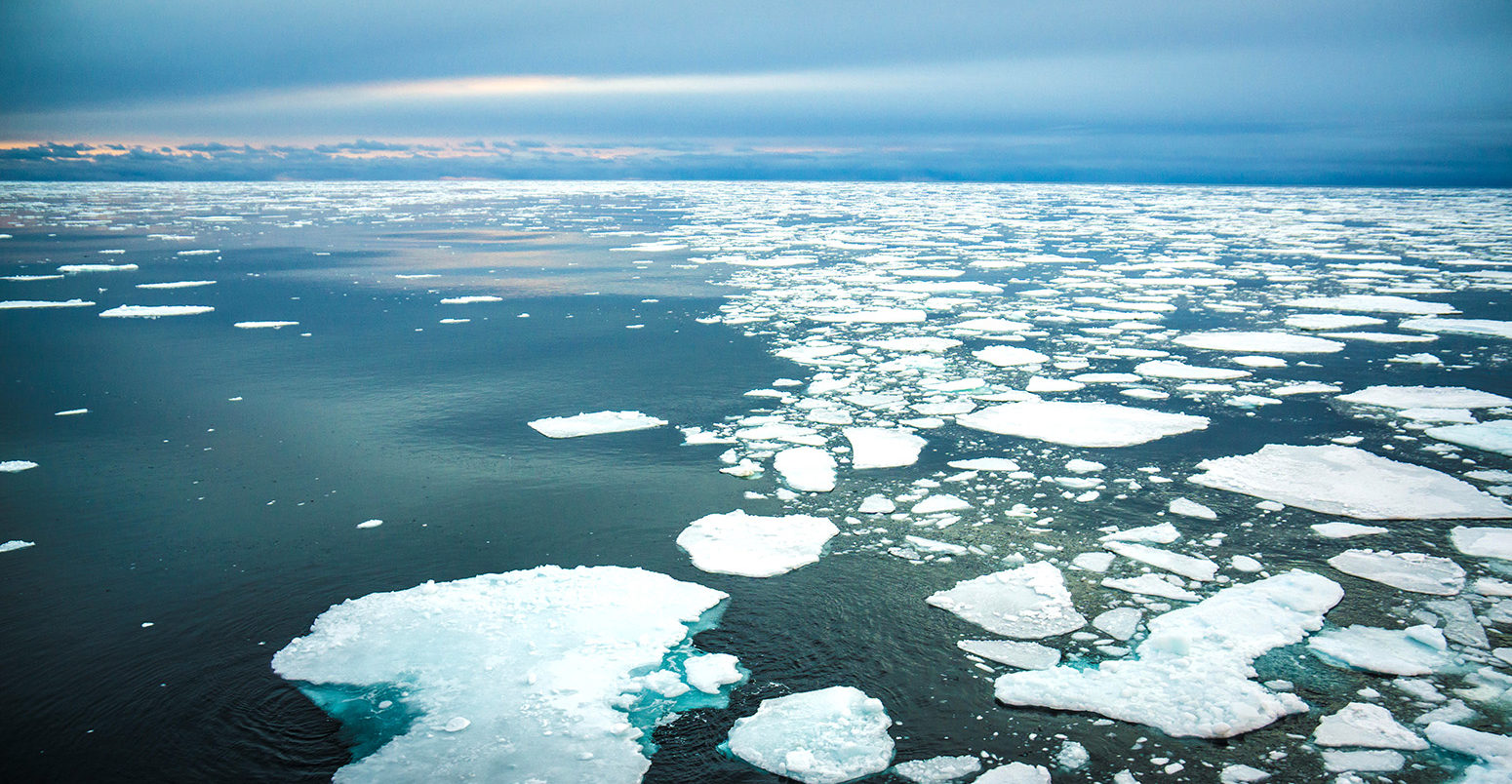Over the last few decades, climate change has profoundly changed the shape and movement of the layer of sea ice covering the Arctic Ocean. As a result of a warming climate, melting sea ice has become more mobile. A new study conducted by McGill’s Department of Atmospheric and Oceanic Science in collaboration with the University of Colorado Boulder, Columbia University, and Arizona State University explored the effects of this increased mobility.
The researchers wanted to assess how transnational sea ice exchange in the Arctic will change during the 21st century. To do this, they used an earth system model called the Community Earth System Model, which tracks the movement of sea ice from the area where it formed to where it ultimately melts.
The team found that the movement of sea ice between Arctic countries will increase significantly in the next few decades. Between Russia and Canada, for example, the quantity of ice exchanged will triple. By mid-century, they predict that the average time it takes for sea ice to travel from one region to another will be about half of what it takes now.
Climate change is causing the sea ice cover to thin, which is in turn increasing the mobility of the ice.
“Thinner ice is weaker and moves faster under the action of the same winds,” Bruno Tremblay, an associate professor in the Department of Atmospheric and Oceanic Sciences at McGill, wrote in an email to The McGill Tribune.
However, the area of ice formed during winter is also increasing, especially along the Russian coastline and the Central Arctic, which could explain why the quantity of ice exchanged between these regions will triple.
Increasing sea ice mobility is especially worrisome because it could facilitate the spread of pollutants like microplastics and oil across the Arctic. According to Tremblay, such pollutants mostly originate from elsewhere.
“Pollutants get to the Arctic from any rivers draining into the Arctic,” Tremblay wrote.
Ships are another transporter of pollutants. Unfortunately, the volume of ships in the Arctic is only rising due to increased economic activity in the region. As melting ice creates new shipping routes, there is growing demand for the Arctic’s mineral resources from emerging economies like China and India. New shipping lanes and increased nautical traffic will likely increase pollution in the Arctic.
“Increased traffic means higher pollutant release [from things like used water] in the Arctic, which then travels far distances and affects the local environment [and people] living in the North,” Tremblay wrote.
Increased shipping also raises the risk of oil spills and shipping accidents, which can add an immense quantity of contaminants to surface ice. The Central Arctic, located in the middle region of the Arctic Ocean, is particularly vulnerable to environmental issues associated with shipping. Since no country holds exclusive rights over this region, the lack of policies regulating the release of pollutants into international waters has left it especially vulnerable.
For boat traffic, the Arctic remains a challenge, with a short operational season, large distances between ports, and severe weather. This makes ships more accident-prone, increasing the chance of releasing toxic pollutants into the water. According to Tremblay, the main way to mitigate this problem is to tackle its source.
“[We must] reduce carbon dioxide emissions,” Tremblay wrote. “[This means that we must] use energy more effectively, better insulate buildings, and move to renewable energy sources.”
Unfortunately, scientists predict that the Arctic sea ice will be in a dire state by the end of the century.
“We expect to lose the summer sea-ice cover within one to two decades,” Tremblay wrote. “By then, [the Arctic] will have a seasonal ice cover instead of a perennial ice cover.”









